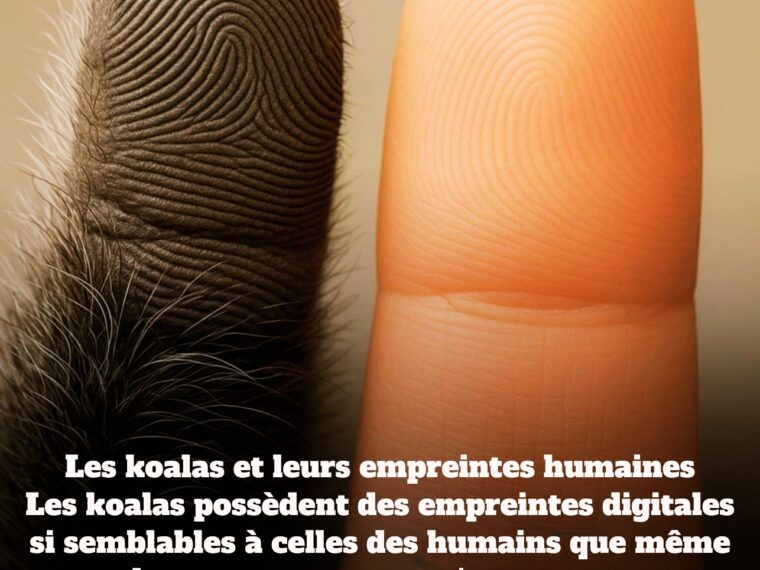Koalas, those iconic marsupials of Australia, hide a fascinating detail that curiously links them to humans: their fingerprints. In fact, the patterns on their fingers are so similar to human fingerprints that they are nearly impossible to tell apart under a microscope.
Nearly Indistinguishable Prints
Biologists and forensic experts have observed that koala fingerprints feature arches, loops, and whorls strikingly similar to those found in humans. This resemblance is so precise that, in some cases, distinguishing a koala fingerprint from a human one on certain surfaces would be extremely difficult.
Convergent Evolution in Action
Koalas are the only marsupials known to develop fingerprints, which serve to improve their grip on tree branches and allow them to move with agility among the eucalyptus trees. This phenomenon illustrates a fascinating concept called convergent evolution: completely separate species evolve similar traits when faced with comparable environmental challenges.
For koalas, these fingerprints provide fine, precise grip, essential for holding onto thin, often slippery eucalyptus branches while feeding.
Nature’s Remarkable Precision
This extreme resemblance to human fingerprints is not a mere coincidence. It shows how nature refines certain forms and functions, reproducing effective solutions across very different species. The result is a perfect example of evolution repeating itself when a trait proves particularly advantageous for survival.
What This Teaches Us
Studying koala fingerprints highlights several intriguing truths:
- Nature can develop identical traits in completely separate lineages.
- Adaptations are not only functional but can also create intricate, detailed patterns, such as the swirls and loops on fingertips.
- Observing these similarities encourages a deeper understanding of evolutionary mechanisms and biodiversity.
Implications for Science and Research
Next page





